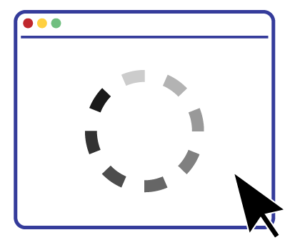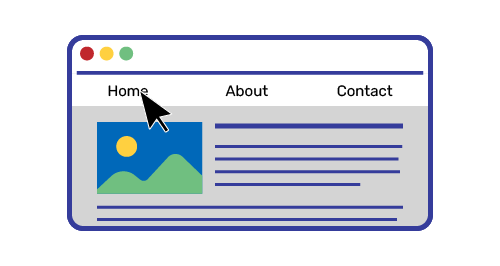We’ve all been the victim of poor user experience. You click on a website thinking it will have the information or product you need, and it is just difficult to use. It takes forever to load, it’s hard to navigate, the content is poorly made, or it’s unresponsive. Deciding it’s not worth the hassle, you simply leave and find a different site to use. Clearly, user experience is important when it comes to keeping people on your site, but that is not all it is good for. A good user experience can also help with on-page SEO and technical SEO strategies.
User Experience and SEO
User experience is so important to SEO because it has a direct impact on the way users interact with your website. The better the user experience, the more time people will spend on your page and the more they will interact with it. Google will notice this and it will help your site to be ranked higher in search results. In this way, an improvement in user experience has a direct correlation with an improvement in your site’s organic performance in search engines.
Key Components of User Experience for SEO
Ensuring that your website has a well-made user experience may seem like an enigma, but it is actually quite simple. All you have to do is focus on improving these key areas and your users will find using your site is a positive experience.
Page Speed
Page speed is a measurement of how quickly content on your site loads. When people are looking for something online, they want it now. They do not want to spend 2 minutes staring at a blank screen while the site slowly loads. A qualified web developer will be able to help you increase your page speed. Some tactics for this are using a highly optimized hosting service, compressing images, and limiting redirect usage.

Responsive Web Design
Responsive web design refers to your site’s ability to be viewed on a variety of devices. Your site may have a great user experience on a computer, but if it does not function properly on a phone, a large percentage of users will not be able to effectively use your website. Once again, a web developer can help improve this area.
Quality Content
The content on your site should be of the highest quality. This will ensure that users are engaged and spend a substantial amount of time on your website. If your content is lacking, you should engage the services of professional graphic designers, writers, and photographers, depending on what kind of content you would like to feature.
Navigational Structure
In layman’s terms, navigational structure is the way different pages on your website are organized and connected to each other. You want the navigational structure of your site to feel intuitive, so that users can easily find what they are looking for. Designers and web developers can both help to improve the quality of your site’s navigational structure.

UX Ranking Factors
When ranking your website in search results, there are several factors relating to your user experience that Google, and other search engines, will take into consideration. Generally, these are:
- Page speed
- Dwell-time
- Mobile-friendliness
- Engagement
By improving your user experience, you will also be improving all of these ranking factors. This will cause your website to rank much higher in search results than if it had a poor user experience.
Does Bounce Rate Affect SEO?
Bounce rate is not a direct ranking factor, meaning that search engines do not take it into consideration when ranking your website in search results. However, this does not mean that bounce rate is worthless when it comes to SEO. It is an important metric which can be used to gain valuable insights. You can use your bounce rate as an indicator of how satisfactory your user experience is. A high bounce rate often means that your user experience is poor, while a low bounce rate means that your users are having a positive experience on your site. Your bounce rate can let you know when it is time to rethink your user experience, which in turn will have a positive effect on things that actually are direct ranking factors.
Organic Click-Through Rates (CTR)
Organic CTR is calculated by taking the number of clicks your website received on a search engine results page (SERP) and dividing it by the number of times it appeared on the SERP. Like bounce rate, organic CTR is not a direct ranking factor, but that doesn’t mean it isn’t useful. A high organic CTR means that your site is resonating with users, causing them to choose it when browsing the SERP. A high organic CTR also means that your site is getting a high amount of organic traffic and that this traffic is appreciating the user experience you are providing.
Internal Linking Strategies for User Experience
An important part of the user experience is that the site is easy to navigate. The user should not have to look around for long to find what they are looking for. The best way to accomplish this is with a well-put-together internal linking strategy. Some key factors to ensuring your internal linking strategy is up-to-snuff are:
- Make it logical. Your site should have categories and subcategories, which organize content in an intuitive way.
- Use descriptive anchor text. Anchor text is the text that makes up the hyperlink. The anchor text should make it clear where the hyperlink will take the user when they click on it.
- Link to related content. Links within content should link to similar/related content. For example a blog discussing how to play golf might link to a blog on how to choose a golf club.
If you incorporate these factors into your internal linking strategy, you will be well on your way to ensuring your site provides a good user experience.
Rich Snippets for User Understanding
Rich snippets are data that you provide to be displayed on the SERP alongside the link to your website. This could include customer ratings, a description of services, or any other content you find pertinent. Rich snippets are invaluable in making sure users understand what your site offers before they click on it. Using rich snippets properly can help convince users to choose your site when they are browsing the results generated from their query.
High-Quality Content for Users
One of the best ways to improve your UX and make sure users stay on your site is by providing high-quality content. The key to making content of this caliber is to make sure it is:
- Engaging. The content should focus on things your users are interested in and will hold their attention.
- Up to date. No one wants to read content that is no longer relevant. You should create new content on a regular basis to ensure that it is timely and relevant.
- Trustworthy. Your content should always be accurate. If a user feels that they can’t trust your content they will leave your site and not return.
If your content includes these key factors, users are sure to enjoy it. They will spend more time on your site and be much more likely to return in the future.
SEO vs. User Experience: What to Prioritize
Sometimes, best SEO practices can be at odds with improving user experience. When this occurs it is always best to prioritize the user experience. This may be surprising, especially with the amount of focus that most marketing experts, including us, place on SEO. However, the best SEO in the world will go to waste if users refuse to use your website due to a poor user experience.




